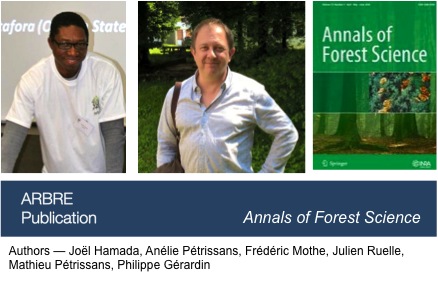Unit — Research Unit for the Study and Research of Wood Materials (LERMAB)
Abstract
Variations in the natural density of European oak wood affect thermal degradation during thermal modification
Hamada J, Pétrissans A, Mothe F, Ruelle J, Pétrissans M, Gérardin P. June 2015. Annals of Forest Science.
Thermogravimetric analysis, performed on small samples of earlywood (5EW) or latewood (LW), indicated that earlywood is more susceptible to thermal degredation than latewood. These results suggest a direct relationship between wood density (which depends on the EW/LW ratio and indirectly on silviculture) and the response of wood during thermomodification processes. One of the main difficulties in developing thermomodified wood products at an industrial scale lies in the difficulty of obtaining consistent products which are stable in quality (durability, dimensional stability, color). This may be due either to the thermal treatment process itself or to intra-specific heterogeneity of wood properties. We investigated the effect of the natural variability of oak wood, particularly in density, on the degree of thermodegradation during thermal treatments. X-ray computed topography was used to assess the effect of initial wood density of oak boards on their thermo-degradation. Intra-ring wood density was estimated using thermogravimetric analysis and microdensitometry.



